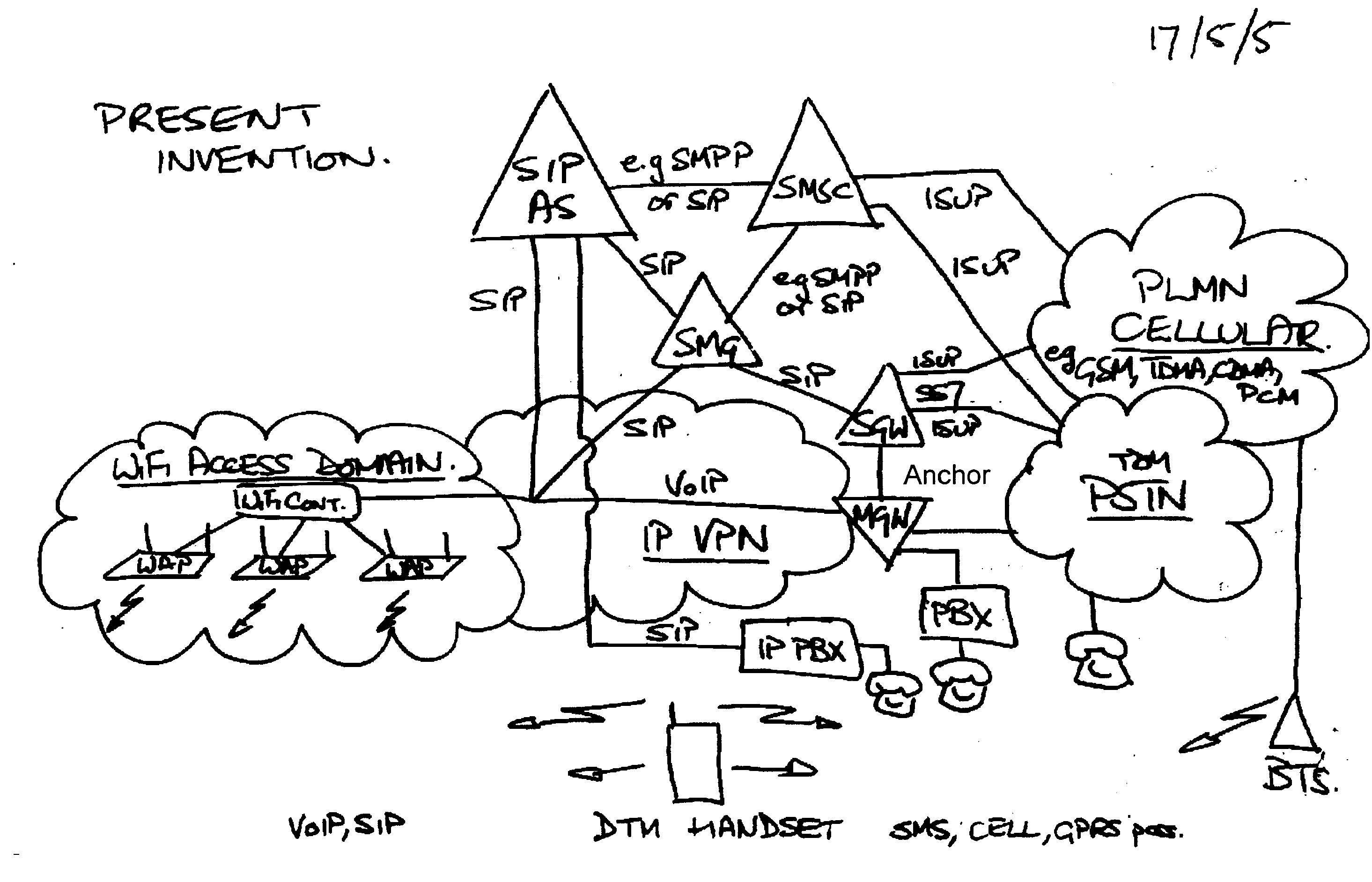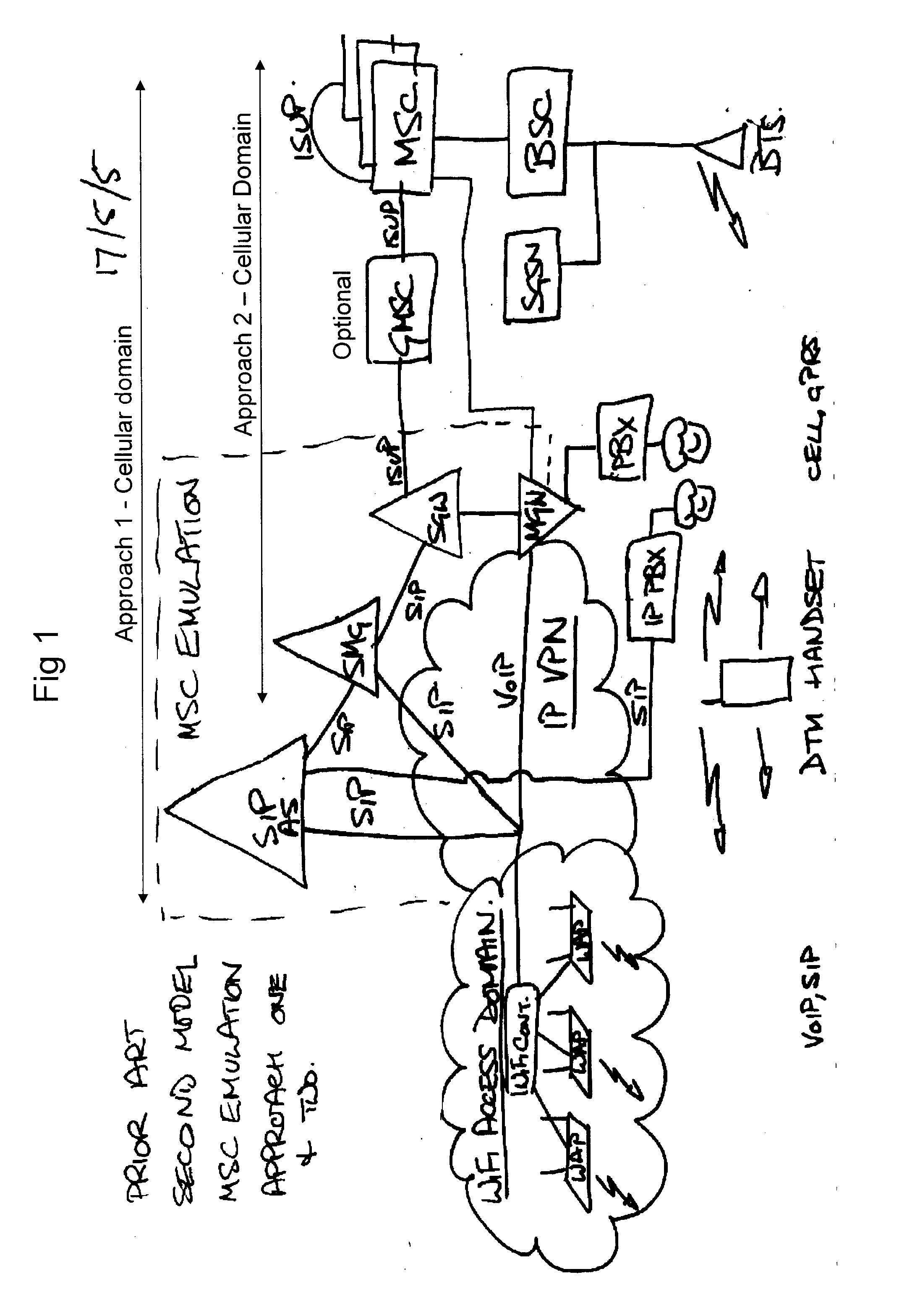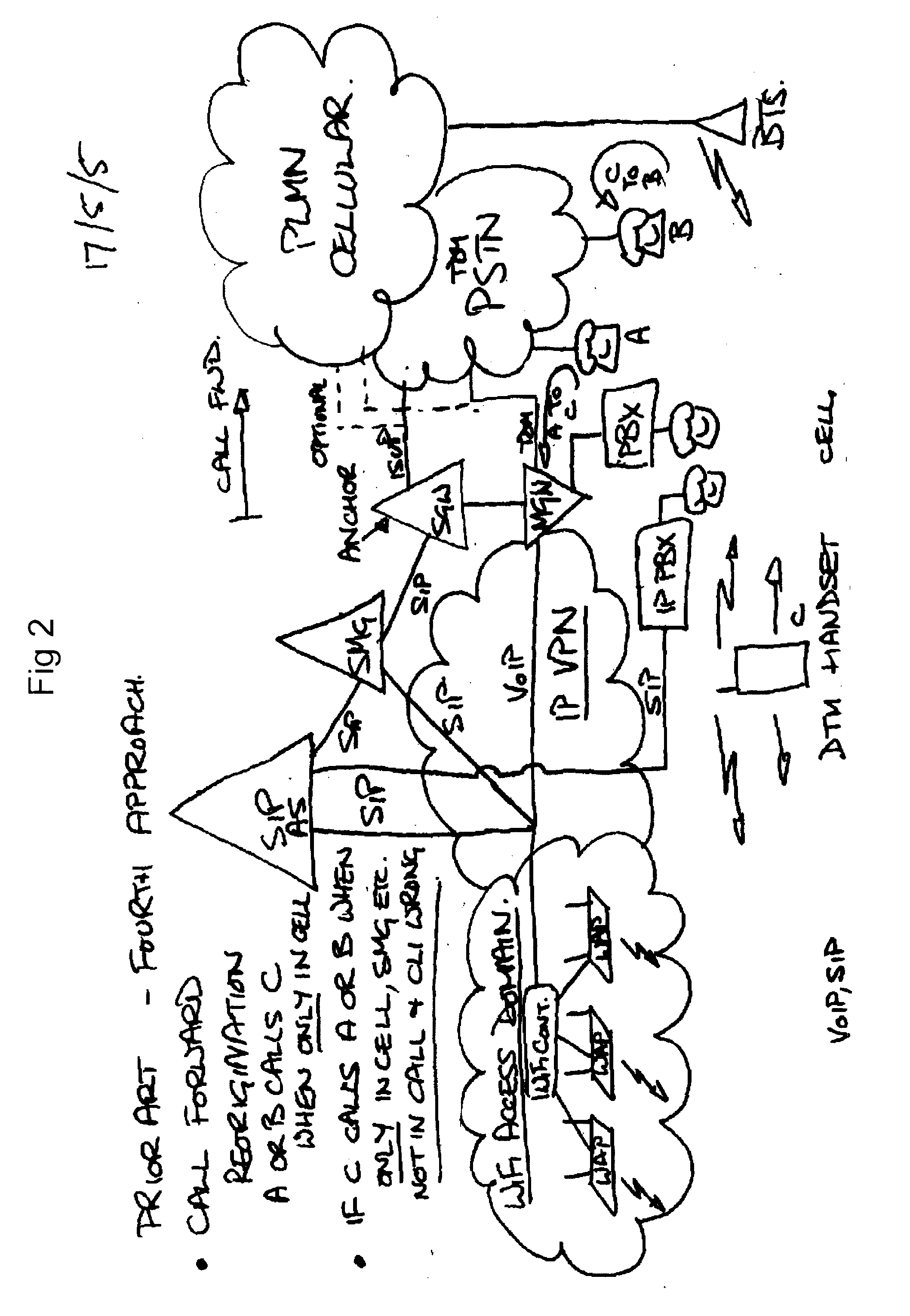Circuit Bearer Control
a circuit bearer and call control technology, applied in connection management, wireless network protocols, wireless commuication services, etc., can solve the problems of not having a standardised method of handing off a call between the wifi and the cellular operator, the challenge of designing and executing a fairly complicated and non-standard sip implementation of an msc, and the solution remains restricted to working very closely with the cellular operator
- Summary
- Abstract
- Description
- Claims
- Application Information
AI Technical Summary
Benefits of technology
Problems solved by technology
Method used
Image
Examples
Embodiment Construction
[0028]In cellular networks at present SMS is carried on ISDN Signalling User Part ISUP signalling on interfaces between MSCs and the SMSC, and MSCs and so called Gateway MSCs (GMSC) that interface to the PSTN where the SMSC is outside that cellular network, signalling ISUP over the SS7 network. The SMSC also has a Short Message Peer to Peer (SMPP) interface that allows communication between the SMSC and other application servers. SMS may also be delivered across fixed line networks such as the PSTN using ISUP. SMS addressing uses conventional telephone numbers for source through Calling Line Identifier (CLI) and destination, and optionally these may be translated by the Service Control Point (SCP) in an Intelligent Network (IN) network, such that the cellular and PSTN may suitably route the message to the mobile handset or fixed line respectively. The SMSC normally implements a store and forward model for message delivery, although this can occur extremely rapidly provided the desti...
PUM
 Login to View More
Login to View More Abstract
Description
Claims
Application Information
 Login to View More
Login to View More - R&D
- Intellectual Property
- Life Sciences
- Materials
- Tech Scout
- Unparalleled Data Quality
- Higher Quality Content
- 60% Fewer Hallucinations
Browse by: Latest US Patents, China's latest patents, Technical Efficacy Thesaurus, Application Domain, Technology Topic, Popular Technical Reports.
© 2025 PatSnap. All rights reserved.Legal|Privacy policy|Modern Slavery Act Transparency Statement|Sitemap|About US| Contact US: help@patsnap.com



